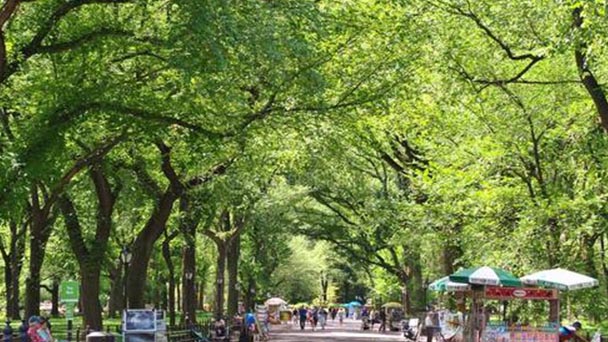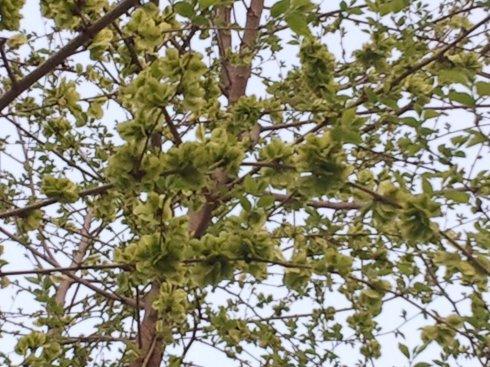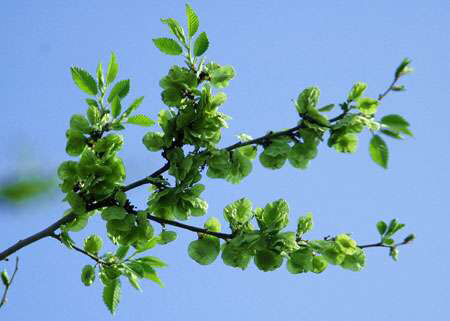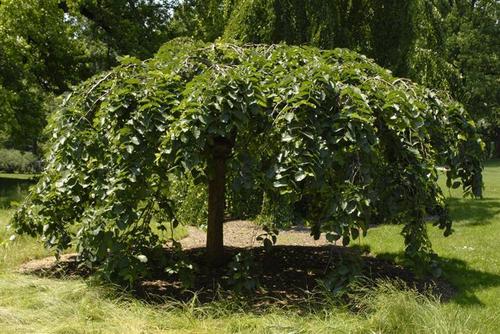How to propagate Siberian elm
Written by Maggie
Dec 23 2020

Siberian elm is mainly used for sowing propagation. Grafting, tillering and cuttage propagation are also available. Seeds should be picked and sown with a weight of 7.7 grams per thousand seeds and a germination rate of 65-85%. Cutting propagation survival rate is high, up to about 85%, cutting seedling growth fast.

Seed propagation of Siberian elm
Mid-april Elm from green to light yellow when timely seed collection, dry in time after sowing. Generally use drill row spacing 30 cm, covering soil 1 cm compaction, because the germination is high temperature dry season. It is best to cover 3 cm soil moisture, when germination with a rake block flat. About 4 kilos per acre. The height of the seedlings is about 10cm to 10-20cm, and the spacing between the seedlings and the rows in the second year is 60× 30cm. After that, the seedlings will be thinned to the appropriate density according to the size of the cultivated seedlings.
In order to improve seed quality, seeds should be selected from healthy mothers aged 15-30 years. When the seeds turn yellow and white, they can be harvested. If gathered late, the seeds are easily blown away by the wind. Seeds should not be exposed to the sun after harvesting, but should be naturally dry, gently remove the seed wing, to avoid damage to the seeds. The sandy loam with water source, good drainage and thick soil layer should be selected as the nursery. The sowing method may be furrow or ridge sowing. Before sowing, prepare the ground to be fine, 4, 000-5, 000 kilograms of organic fertilizer applied to the acre, shallow turn after filling foot water.
Sow 3-5 kg in an acre, open a shallow ditch to seed into, covering soil 0.5-1 cm, covering soil too deep seed germination is difficult to find out. After sowing, it should be slightly suppressed to facilitate the close combination of seeds and soil and moisture conservation. When the soil is dry, do not pour water over the head, and can only spray the ground, so as not to harden the soil or wash away the seeds. 6 to 10 days after germination, more than 10 days after the seedlings were unearthed, the seedlings began to thin when the seedlings grew to 2-3 true leaves, seedlings were fixed when the seedling height was 5-6 cm, 30,000 to 40,000 seedlings were left in the acre area. Water in time when thinning seedlings, strengthen intertillage weeding seedling stage, and in July to early August we can apply compound fertilizer 10 kg. Every half a month, apply 2 times, and we can also apply new foliar fertilizer. No ammonia nitrogen fertilizer shall be applied after the middle of August, and soil moisture shall be controlled to facilitate the lignification of seedlings.
Cutting propagation of Siberian elm
After autumn deciduous leaf and spring before germinating, Siberian elm can be cuttaged.
Soil preparation for bed
No matter in autumn or spring, the garden should be turned deep (about 25 cm) fine whole, apply sufficient base fertilizer, soil disinfection. Spring cuttings, the best winter irrigation plantar water, the next spring, deep tillage bed.

The article adopt the ears
Cuttage in autumn should be taken with shear and inserted; Spring cuttings, seeds can be winter storage, and also can be taken with the insertion. Select more than 0.5 cm strong strips, grafted into 15-20 cm long cuttings, the upper shear mouth should be cut flat, the lower shear mouth should be cut near the eye into a horse ear shape, which is conducive to cutting rooting.
Cuttage: Cutting rows 30 cm apart and plants 20 cm apart.With ditching cuttings, scion exposed to the ground, overlying soil collapse, irrigation permeable.
Early irrigation
Water affects rooting survival of cuttings. Cuttings can take root after a month. So in the inserts before rooting, there should be more irrigation, to keep the soil moist, promote the survival of rooting.
Sprouting in time
Siberian elm germination strong, MOE more, when MOE to 2-3 cm or so, choose to keep a healthy MOE, the other MOE all cut off, in order to prevent the consumption of nutrients and water cuttings, conducive to rooting survival. Because germination is unearthed in the morning and evening, so in addition to the bud should be carried out many times.
Scarification weeding
Weeding can keep soil moisture, increase ground temperature and promote rooting, but it is necessary to prevent root injury and shoot injury.
Grafting propagation of Siberian elm
In the middle of March, when the bud germinated, cut off the smooth part of the rootstock about 2 meters long, the scion about 5 cm long, keep 2-3 full buds in each ear, cut a horse ear shape at the bottom of the ear, the face is 2.5 cm long, the face is not deep half of the ear thickness, a partial wedge shape is formed under the back of the shaved face. The cut scion is inserted vertically between the cortex and the xylem and then tightly wrapped with a plastic wrap.

Latest Updated
- Benefits of Bugleweed - 7 Science-backed Health Benefits
- Bugleweed Dangers & Side Effects - Is It Poisonous?
- How to Plant Evergreen Trees - What You Should Know
- When to Plant Evergreens - Grow Guide for Evergreen Trees
- 12 Wonderful Evergreen Shrubs for Your Garden
- 12 Popular Evergreen Plants with Pictures for Beginners
- When And How To Prune A Lilac Bush Like a Pro
- How to Grow & Care for Lilac Vine (Hardenbergia Violacea)
- Japanese Lilac Tree (Syringa Reticulata) Care & Propagation Guide
- Shumard Oak Pros and Cons - What to Know
Popular Articles
- Winter maintenance of Antirrhinum Majus
- How to Grow Terminalia Mantaly Tree
- How to Grow and Care for Crossostephium Chinense
- How to grow Antirrhinum Majus in spring
- Peristeria Elata (Dove Orchid) Profile: Info & Care Guide
- Underwatered Snake Plant (Sansevieria Trifasciata) - Signs And How To Fix
- How to Care for Brazilian Jasmine Plant (Mandevilla Sanderi)
- How to Grow & Care for Graptopetalum Purple Delight in Summer
- Rosa Chinensis (China Rose): Plant Growing & Care Tips
- How to Care for Baby Sun Rose (Aptenia Cordifolia)